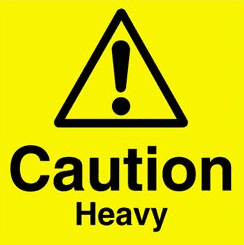 Hoarder Fire NSW Fire Department
Hoarder Fire NSW Fire DepartmentOne question that keeps coming up, time and time again, when dealing with hoarder homes, is how do we keep the piles of belongings stable and prevent them from falling on us or the occupant. This is a challenging question with a multiple different answers, dependent on the situation. From fighting a fire to removing a patient on an ems run this challenge can be met head on to keep the stuff off of us. Let’s look at a few simple ways to keep the massive amount of belonging in their place while we perform our tasks.
Firefighting:
The most challenging part of fighting a fire in hoarder conditions is keeping the belongings in the same place. From a VEIS search to advancing a hoseline dealing with the stacks will be difficult. One way of stabilizing these piles is to avoid them at all costs. The clinical term used is “Goat Paths” and this is how the occupant accesses their home. By using these pathways will allow you to minimize the movement of the belongings, if the pathways are wide enough to allow. Enviably you will know some things over, but if you make an effort to keep the hose low on the stacks and crawl toward the bottom of the pile you can help prevent a collapse.
While staying low will not be an end all, cure all it will use the base to keep them in place. Another benefit in staying low is to avoid the heat that you will be exposed to if you choose to go over the piles of belongings. Every 12 or so inches equals 100 degrees and with some hoarding conditions that means a 200 degree spike.
If you can’t stay low you may be creative in your thought process. Bringing an attic ladder, or two, or a salvage cover can offer you a tool to help keep the stuff in place. If you choose an attic ladder, try to place it at waist level, when standing, to stabilize the middle of the pile. This will be a labor intensive task and you will need to pay close attention to your air supply. Often times there will not be enough space to lay it flat, so you will need to angle it upward to the ceiling level to capture as much surface area as possible. Choosing a salvage cover will also be challenging. Pre-rigging it for a quick and sometimes not complete deployment will be needed. If fire conditions allow you can carry it inside and deploy it over the pile. The cover will need to have some weight to it, not the lighter weight blue style. During this process you may need to knock over some of the pile to help stabilize it. When choosing this method a thermal imagining camera and due diligence is needed to make sure you are NOT exposing the firefighters or cover to high heat conditions.
Accessing the exterior:
One pressing problem with hoarding is accessing the exterior of the home. From collections in the back yard to side yard full of belongings gaining access can be a hazardous. Using some of the above mentioned tactics can be used, but also using ground ladders to stabilize the outside belongings may also be used. Laying it on top, to the side, or a combination of both can be used to make pathways of access. Removing of privacy fencing of other barriers may be necessary to make this achievable due to the fact that they often use them to “Hide” their hoard.
You may also choose to use a salvage cover in combination with grounds ladders to make a stable environment as well. Much like a ladder chute, to collect water, you can use two ladders and a salvage cover to make pile of belongings more stable to walk around, or worst case, climb over. Climbing over these massive amounts of material can be challenging even with chutes and ladders to help offer stability.
Conclusion
From stabilizing the piles to maneuvering around them entering a hoarded environment offers man challenges. Taking the time to stabilize the pile will allow you a greater level of safety as your exit routes will stay clearer. One thing needs to be remembered when crawling in, your way out may become blocked, no matter how hard you try. Using the paths to fight a fire or access a patient is a “best practice” when dealing with hoarding. Getting creative and using some technical rescue skills will also allow you to enter and exit safely. Remember that unless you practice these you WILL NOT be proficient at them. Add some of these recommendations to your next drill and see if you can stabilize the stacks……..




























